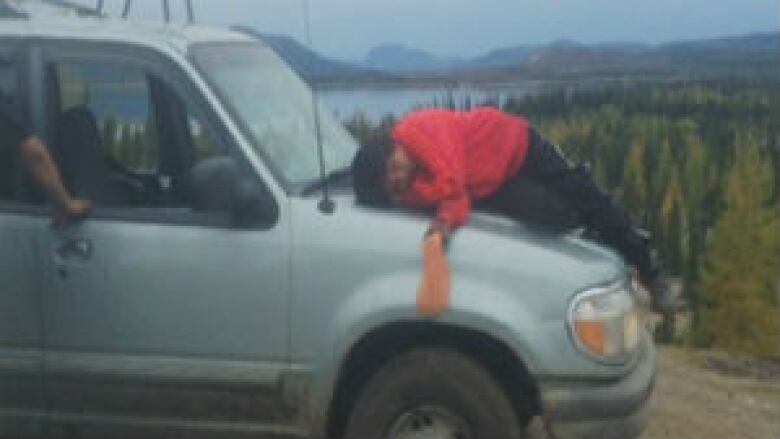Wadden | Lets not give up on Natuashish

Now more than ever, while the people of Natuashishare on the cusp of recovery, they need support, not judgment.
Know any addicts yourselves? Have an alcoholic in the family? Ever watch them sober up, then relapse?
Pretty frustrating, isnt it?
But you cant turn away when children are neglected to such an extent they begin self-destructive behaviour, like sniffing gasoline, at the age of six.
So whats to be done?
Eight years ago, I spent more than a year studying the issue of addiction in Aboriginal communities, thanks to a fellowship from the Toronto Stars Atkinson Foundation.
Heres what I learned.
There are hundreds of places like Natuashish in Canada.
As recent as 2 years ago, 40 per centof the smartest First Nations children in Northern Ontario came to high school with an addiction to OxyContin.They werent sniffing gas in plastic bags, but their substance abuse is just as disturbing.
Addiction is the scourge of Aboriginal communities around the world.
Aboriginal people in places as disparate as Greenland, Australia, Hawaii, Japan, the United States, and Canadahave developed some extremely effective and innovative responses to widespread crises of addiction, and its companion scourge, child sexual abuse.
A conference called Healing Our Spirit Worldwide is held in one of these countries every four years. Its part academic conference, part cultural celebration.
I learned a lot while attending the conference organized by First Nations, Metis, and Inuit people in Edmonton in 2006. Colonialism tears apart indigenous communities. Returning them to spiritual and cultural health is never easy, but this healing movement is off to a good start.
Torn apart
Want to know why Natuashish is torn apart by internal strife?
Its called lateral violence. It occurs when you have a lot of dysfunctional people living or working together. They take their anger andemotional painout on each other. It manifests as bullying, backbiting, and undermining leadership.
Before the Mushuau Innu moved from Davis Inlet to Natuashish, they had self-declared, in their Peoples Inquiry, that 90 per centof the adults binge drank there almost every day. Imagine what harm people did to each other, how families were ripped apart, how many dangerous liaisons were made.
It takes generations to repair that kind of damage, and to put the underpinnings of societies like the Innu back together again. And all of this started in 1967, when they gave up their nomadic way of life.
'Give us time'
When I was in Greenland a few years ago, an Inuit cabinet minister in charge of that countrys offshore oil industry told me that his people, also torn apart by social strife, were still in their Middle Ages. The time frame of their rapid social change parallels the Innu. He invited me to recall what Europe was like during its Middle Ages.
Give us time, he implored.
That is not to say we should ignore the children who are suffering so much now.
These children must be put in the care of responsible adults wholl ensure they attend school, eat well, and get enough sleep at night.
Unfortunately, that wont solve their love deficit.Thats what keeps the addiction cycle going in places like Natuashish.
Emotionally empty
Children of addicts are very lonely. They grow up with a big empty space in their hearts, a space they may try to fill with the visions of angels and fairies that entice six-year-olds in Natuashish to try their first baggieof gas.
Addiction is a disease of selfishness according to the founder of the Brentwood Recovery Centre in Windsor, Ont.a Catholic priest named Father Paul Charbonneau. He was a child of addicts, and could always tell fellow sufferers amongst his students. They werent going around with bags of gasoline, but he could pick them out in a crowd. They might have been tough, but they were emotionally empty.
The Brentwood Centre treats hundreds of addicts every year, many Labrador Innu among them. When I visited, the director was from Newfoundland, and so was one of the most lively addiction counsellors, a former resident of the Mount Cashel orphanage. Both men, recovered addicts, believe in the value of talk therapy to break through the addicts its all about me and my needs way of thinking.That narcissism usually comes from not having emotional needs met during childhood. Its what makes the cycle perpetual.
One of the best books Ive ever read on this subject is called A Poison Stronger than Loveby Anastasia Shkilnyk. She got the title from an Ojibwa man in Grassy Narrows, Ont. He said alcohol in his community (in the 1980s) had become a poison stronger than love.
So this isnt the time to give up on Natuashish.Its time to celebrate and support the many people there who have sobered up, and are trying to raise their families in a culture that hasnt yet rid itself of the poison.
Marie Wadden is a network producer with CBC Radio in St. John's. She is the author of the bookWhere the Pavement Ends: Canada'sAboriginal Recovery Movement and the Urgent Need for Reconciliation, which was shortlisted for the Shaugnessy Cohen Prize for Political Writing in 2009, as well as the Winterset Award.












_(720p).jpg)


 OFFICIAL HD MUSIC VIDEO.jpg)
.jpg)



























































































